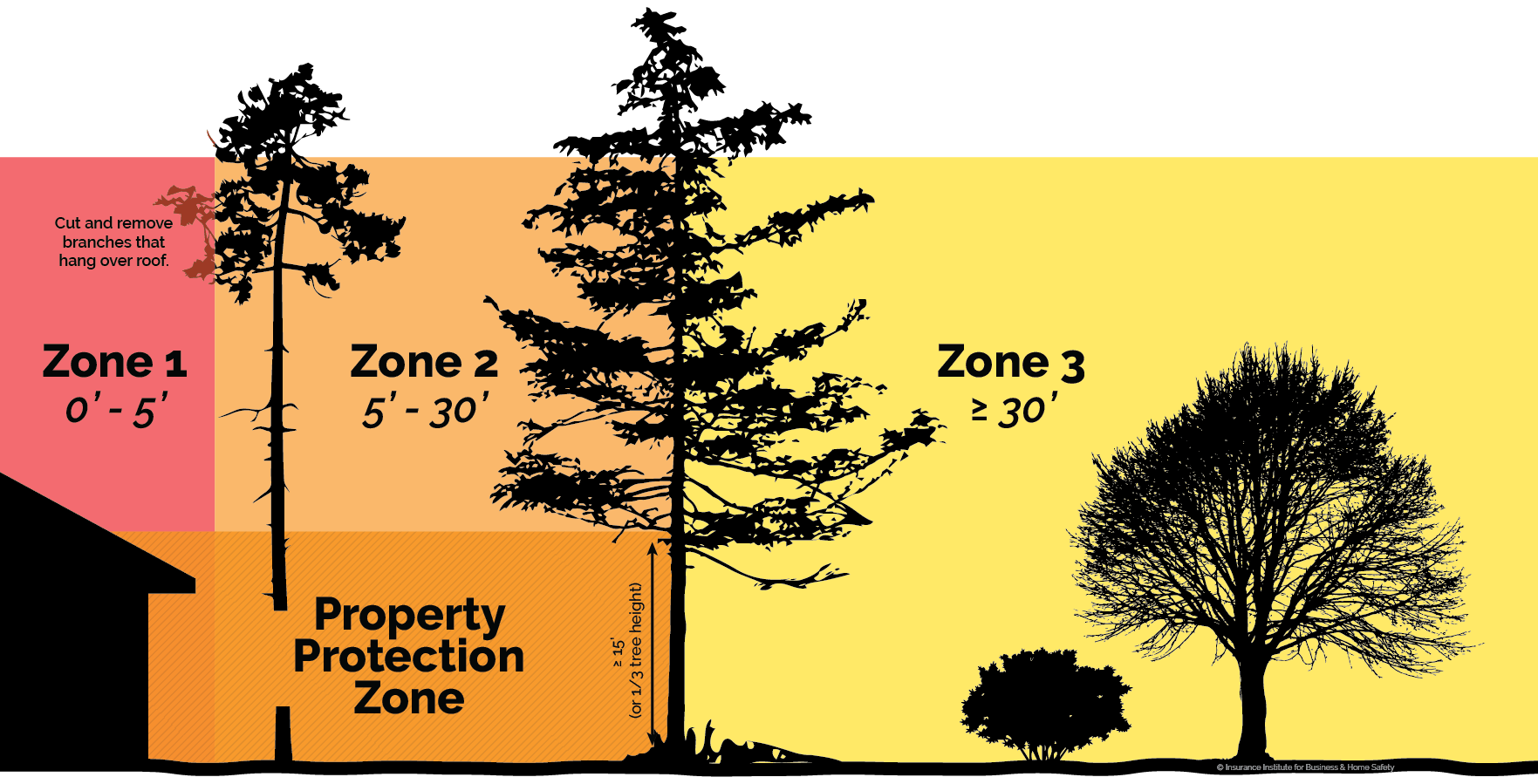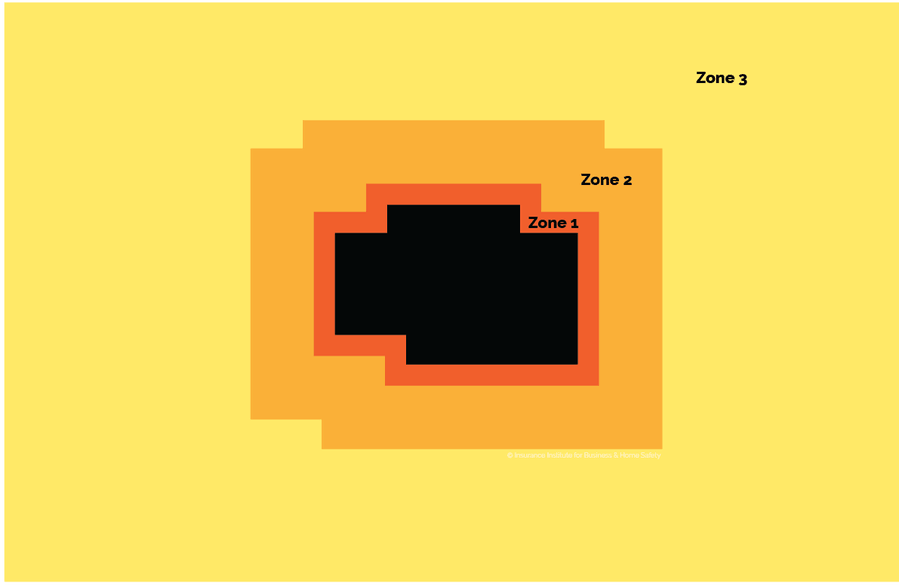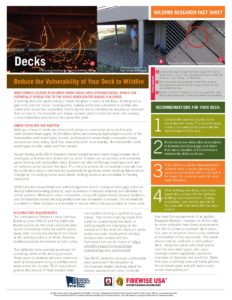Maintain the 3 zones around your home or business, collectively called defensible space.
1
Zone 1: The home ignition zone (noncombustible zone) / 0–5 ft from the building and under the deck

This zone is closest to your home or business, so it requires the most careful selection and intensive management of plants and materials. Maintaining this zone will reduce the chance that fire will ignite near your building and lead to a direct flame contact exposure.
- Install hard surfaces in this zone (such as a concrete walkway) or use noncombustible mulch products (such as rock mulch).
- Regularly water your lawn and plants to prevent dry vegetation in this area.
- Remove dead plant material from plants.
- Remove plants adjacent to combustible siding and foundation vents, as well as plants under or next to windows and under-eave vents or in interior corners.
- Do not store combustibles under the deck.
2
Zone 2: 5–30 ft from the building or to the property line
Maintaining plants in this zone will help prevent fire from climbing into the top portion of trees or shrubs and stop fire from burning directly to your home.
Wind-blown embers can still ignite individual islands of plants in this zone, making plant selection and maintenance in Zone 1 and plant spacing in Zone 2 critical.
- Maintain trees and shrubs in well-spaced groupings.
- Remove dead material and lower tree branches.
- Maintain trees by keeping a minimum horizontal spacing of 10 feet between crowns, with the distance increasing with increasing slope.
- Prune limbs and branches to a minimum height of 6 feet off the ground. For shorter trees, pruning should not exceed 1/3 of the tree height.
3
Zone 3: 30–100 ft from the building or to the property line
Maintaining plants in this zone will help slow down and reduce the energy of the wildfire, slowing its advance to your building. Tree and brush spacing should force any fire in the tops of the trees, brush, or shrubs to drop to the ground.
The rate of spread and flame length of a wildfire is affected by slope. A steeper slope will result in a faster-moving fire with longer flame lengths.
- Remove dead plant material and tree branches from vegetation on a regular maintenance schedule.
- Create islands or groupings of vegetation.
- Remove lower tree branches.
- Maintain trees with a minimum horizontal spacing of 10 feet between crown edges.








